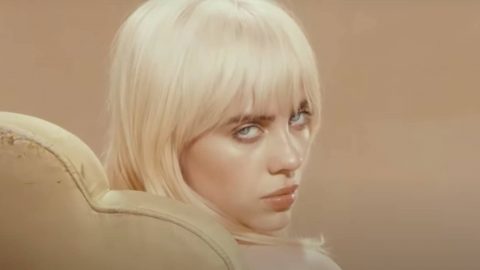
When SuperM made their debut back in 2019, the group’s tag of “the Avengers of K-pop” seemed like just a slightly cringey, one-off marketing ploy designed to drum up headlines and attention. In the time since, though, it’s steadily revealed another facet to it – the first hint at SM Entertainment’s own Marvel-like multiverse, the SM Culture Universe (SMCU).
- READ MORE: Epik High’s Tablo: “I’ve gone through long periods where I felt like I was completely alone”
K-pop companies building alternate universes full of fantastical mythology and lore for their acts is nothing new. BTS have the Bangtan Universe. Until they disbanded earlier this year, GFRIEND were fleshing out their world, dubbed A Tale Of The Glass Bead. CRAVITY, ATEEZ, Tomorrow X Together and more have all built their own parallel dimensions to some extent too.
What makes the SMCU stand out – and makes it far more ambitious than any other K-pop metaverse – is its scope. This isn’t just a fictional world created for just one artist, but one that will connect seemingly every act on the label. Even though it was only formally unveiled with the label’s newest group aespa, it looks like even past releases will be linked into one big futuristic story. Think that sounds like a mammoth job? You’re not wrong.
Here’s what we know about the SMCU so far: it exists in a world known as Kwangya, which is home to a villain called Black Mamba (like the aespa song) and alter-egos of SM’s idols, which were created using data that was collected online. The only alts we’ve met so far are aespa’s ae counterparts, although an avatar version of the legendary BoA appeared at the end of her 202020 BoA video last November (it’s unclear if this was part of the SMCU’s lore).
If SuperM are the Avengers of K-pop, then SHINee are now being labelled “the Five Lights” and Girls’ Generation as “the Goddesses Of Sound”. It’s still pretty early days in terms of this intricate universe but, as its story continues to unravel, it will be told through cartoons, animations, novels, webtoons and more, alongside artists’ albums and music videos.
As you can see from the above, doing something the easy way is not something that comes naturally to SM. Perhaps that’s why the SMCU is linked with the agency’s big project to remaster old releases, tying in old classics with this brave new world. Only two days ago, a new 2021 version of H.O.T’s ‘Free To Fly’ was released, performed by the group’s singer Kangta and featuring NCT’s Sungchan and aespa’s Winter. The music video? Set in Kwangya, of course.
Once upon a time, SM was once on top of the K-pop world, but now it could do with something cool and exciting to help gain back some of its former Marvel-level dominance in the industry. Last year, they were the only company out of the “big four” – the others being HYBE, JYP Entertainment and YG Entertainment – to see both sales and profits decrease.
The SMCU could go some way in reversing those fortunes – crafting a world that you have to fully immerse yourself in to understand and encouraging fans to make their own connections and theories about what on earth is going on. If you’re not interested in all of that, you can still enjoy the songs without having to get bogged down in all the narrative.
Such grand ambitions do come with their own challenges though. Updating old releases to fit this new story arc is all well and good – until the links between everything become more and more tenuous, tracks that weren’t written for this purpose squeezed in where they don’t fit. It’s going to be difficult enough to keep everything cohesive and consistent with just the active groups, let alone reimagining SM’s entire history too.
Not only is there a danger of overcomplicating things and sullying the agency’s legacy, there’s also the risk of limiting every single artist on the roster to the same – or incredibly similar – concepts. Is there room for enough variety, especially given the sheer amount of comebacks SM usually facilitates each year – or will things get stale very quickly?
SM also doesn’t have the best track record when it comes to following through on big ideas. Case in point, the NCT graduation system which was meant to see the members level up out of the Dream unit when they reached 20 in Korean age. Instead, it was scrapped after only Mark had graduated the unit – and then he was quickly added back in. Building the SMCU is only going to work if the company sticks with it (and even then it’s still up in the air). If they don’t, their entire catalogue could be left in a shambles that not even the Avengers, of K-pop or otherwise, can fix.
The post SM’s Culture Universe could be K-pop’s most ambitious alternative universe yet – but can it be pulled off? appeared first on NME.



